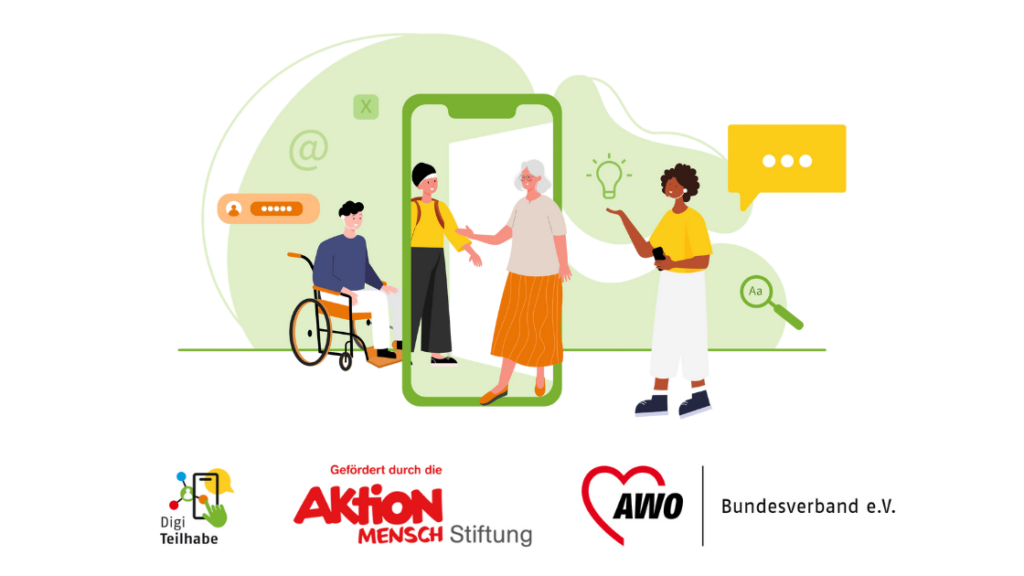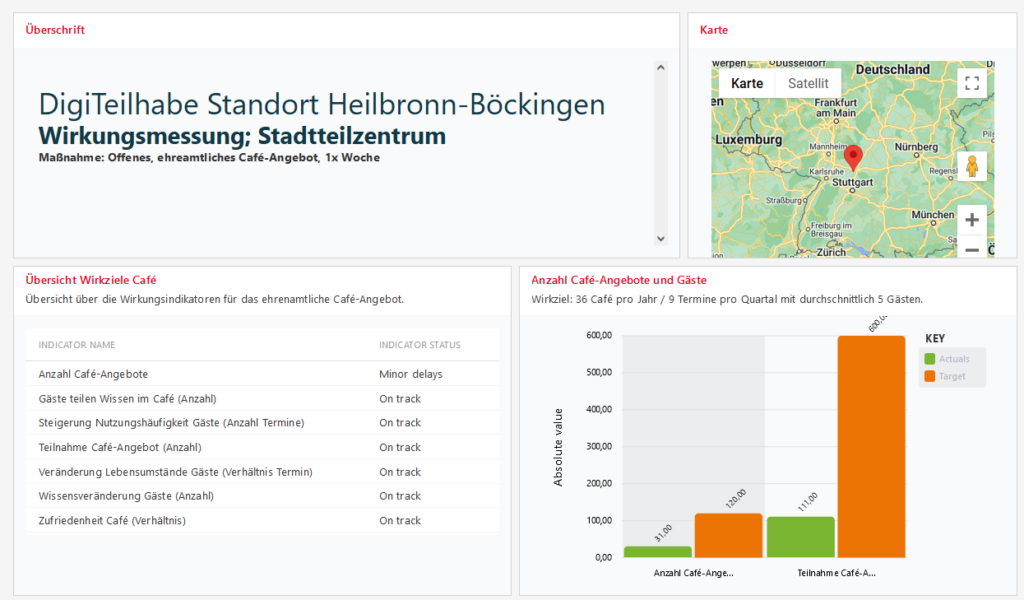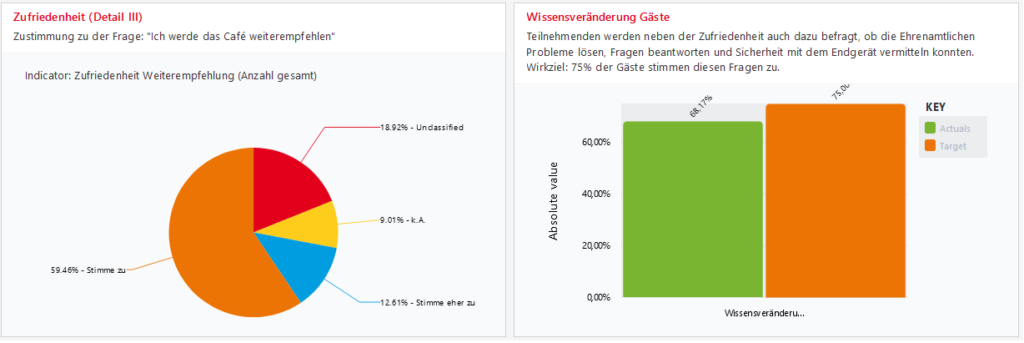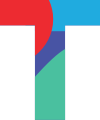
We speak with Matthias Schug, project leader at Arbeiterwohlfahrt (AWO), who shares his experience with digital impact monitoring and orientation on the DigiTeilhabe initiative, aimed at enhancing digital participation for vulnerable groups in Germany.
Matthias offers a unique perspective on the shift from output-centric thinking to the deeper examination of the longer-term impact focus, highlighting the benefits of data-driven insights and how they can improve crucial decision-making and communication on social sector initiatives.
Matthias, could you first elaborate on the concept of 'digital participation'?
Digital participation, or digital inclusion, is about ensuring that all individuals, especially those facing disadvantages or marginalisation, have the access and skills needed to engage with information and communication technologies. This goes beyond simply providing technology; it’s about supporting individuals to actively participate in and shape the digital world. In practical terms, this may involve teaching digital skills to those who need it most, providing devices and internet access, and promoting initiatives that foster digital creativity and engagement. Ultimately, digital participation aims to ensure that everyone has the opportunity to benefit from and contribute to the digital realm.
What significance does digital participation play in AWO's wider mission?
For AWO, one of Germany’s largest organisations working in social welfare, digital participation is a growing area of concern. We support vulnerable groups, including the elderly, people with disabilities, children in need, and those facing poverty or social exclusion. And as more services move online, the lack of digital participation exacerbates many existing social issues. Take for example the impact of not having an email address. It may seem like a minor detail, but it can result in individuals being unable to access many, if not most, essential services and opportunities. As an advocacy organisation for vulnerable target groups, we also campaign politically for digital participation.
Can you describe the DigiTeilhabe project's nature and key objectives?
Digital participation has become a precondition for broader social inclusion, yet not everyone has benefited equally from the digital transformation of society. This is particularly the case for people with disabilities or people experiencing poverty. Our five-year pilot project, funded by the Aktion Mensch foundation, is testing tools and methods with the aim of lowering the barriers for these groups to enter and navigate the digital world.
“Digital participation goes beyond simply providing technology; it’s about supporting individuals to actively participate in and shape the digital world.”
We currently support digital skills and opportunities in two key ways: We train volunteers to teach digital skills in an accessible, low-barrier manner, including creating open spaces or cafes where individuals can seek support and guidance without intimidation; and we also focus on training people with disabilities to become multipliers of digital skills within their communities, promoting social inclusion and peer-to-peer support.
Talk to us about your initial perception of impact monitoring and orientation.
I have been managing projects for many years, but the focus on impact orientation was relatively new territory for me. Up until very recently, the mentality in the German social sector landscape felt heavily output-centric; that is to say, focusing on how many events were held and how many attendees were reached, etc. But lately there’s been a growing emphasis on impact monitoring and orientation, to look at results beyond surface-level metrics. It has prompted us to examine the deeper changes our initiatives bring about and to consider unexpected outcomes.
What specific realisations prompted you to shift from reluctance to enthusiasm for impact monitoring?
Honestly, I had initial doubts about the resources and time required. But in collaborating with local project partners to develop tailored impact models, we witnessed the power data-driven insights can have on programming. We began with design-thinking workshops, involving target groups in developing local project ideas. People with disabilities and volunteers participated in designing and testing local impact models and instruments.
“In collaborating with local project partners to develop tailored impact models, we witnessed the power data-driven insights can have on programming”
Through this, we moved away from reliance on intuition and experience-based decision-making. Impact monitoring brought a new dimension, highlighting tangible developments and outcomes that might have otherwise been overlooked. What’s more, the prospect of having clear, data-backed figures helped project steering and reporting.

How have digital tools simplified your impact-focused work within the project?
Each sub-project generated a wealth of data from numerous individual indicators, and managing this data in Excel sheets became cumbersome. I wanted a systematic way to manage this data and analyse it, and even explored programming with R. But I was relieved to discover there were dedicated tools to meet the needs of the project. They’ve helped me to structure and automate data monitoring, collection and analysis, and dashboards provided at-a-glance insights and improved communication with stakeholders.
“Each sub-project generated a wealth of data from numerous individual indicators, and managing this data in Excel sheets became cumbersome.”
What specific features of digital tools have been most beneficial for your impact monitoring and orientation needs?
The ability to aggregate data from multiple projects has been the most valuable. I can merge data from various sub-projects and perform automatic analyses, saving time and effort. But the biggest benefit comes from dashboarding, allowing me to visualise data according to my needs and share insights with project partners.
They provide us with an overview of key indicators, such as the number of people reached, improvements in digital skills, and the impact of digital technologies on their everyday lives. We triangulate survey data with assessments from our on-site experts to provide context and ensure the data tells a comprehensive story. These insights are invaluable for justifying and promoting our work publicly, and important discussions with funding bodies.
What were some of the biggest challenges you faced in implementing impact monitoring, and how did you tackle them?
As a pilot project, we faced the challenge of working in uncharted territory without established indicators. Impact orientation is an iterative process, and we continuously adapt our models and instruments based on learnings. Our biggest challenge has been reducing complexity without losing essential insights. Involving front-line workers and volunteers in developing impact measurement tools has been key, although it has resulted in a complex system that we are still refining.

What emerging trends or challenges do you foresee in impact monitoring and orientation, especially within the German social sector? How can organisations stay ahead of the curve?
Making impact orientation practical and manageable is crucial. We need toolboxes with indicators and measurement instruments tailored to the sector, developed in collaboration with the scientific community. Associations like the German Red Cross are establishing competence centres, taking ownership of their impact assessment journey.
Additionally, adopting impact monitoring often requires flexibility in project structures and goals, which can be difficult to receive buy-in for. But by embracing this approach, organisations can break free from output-centric thinking. They can make more informed, data-driven decisions that align with their long-term strategic goals, ultimately improving the effectiveness of local development initiatives.
“Impact orientation requires careful planning and time investment. Think about impact communication and strategy from the outset”
And finally, what advice would you give to project leaders who are hesitant to embrace impact monitoring and orientation, especially in the German social sector?
Impact orientation requires careful planning and time investment. Developing simple yet meaningful indicators is challenging but crucial. Focus on the essentials, let go of expectations, and remember that it’s a monitoring system, not scientific research. Think about impact communication and strategy from the outset, and leverage existing documentation and quality management systems for relevant measurements. Finally, correlate different data sources for deeper insights, and consider digital tools like TolaData to streamline data collection and management.
For more information about the DigiTeilhabe project and the work of AWO, visit the project page below. We are grateful to Matthias and AWO for sharing their time and experiences and look forward to seeing the project grow.




